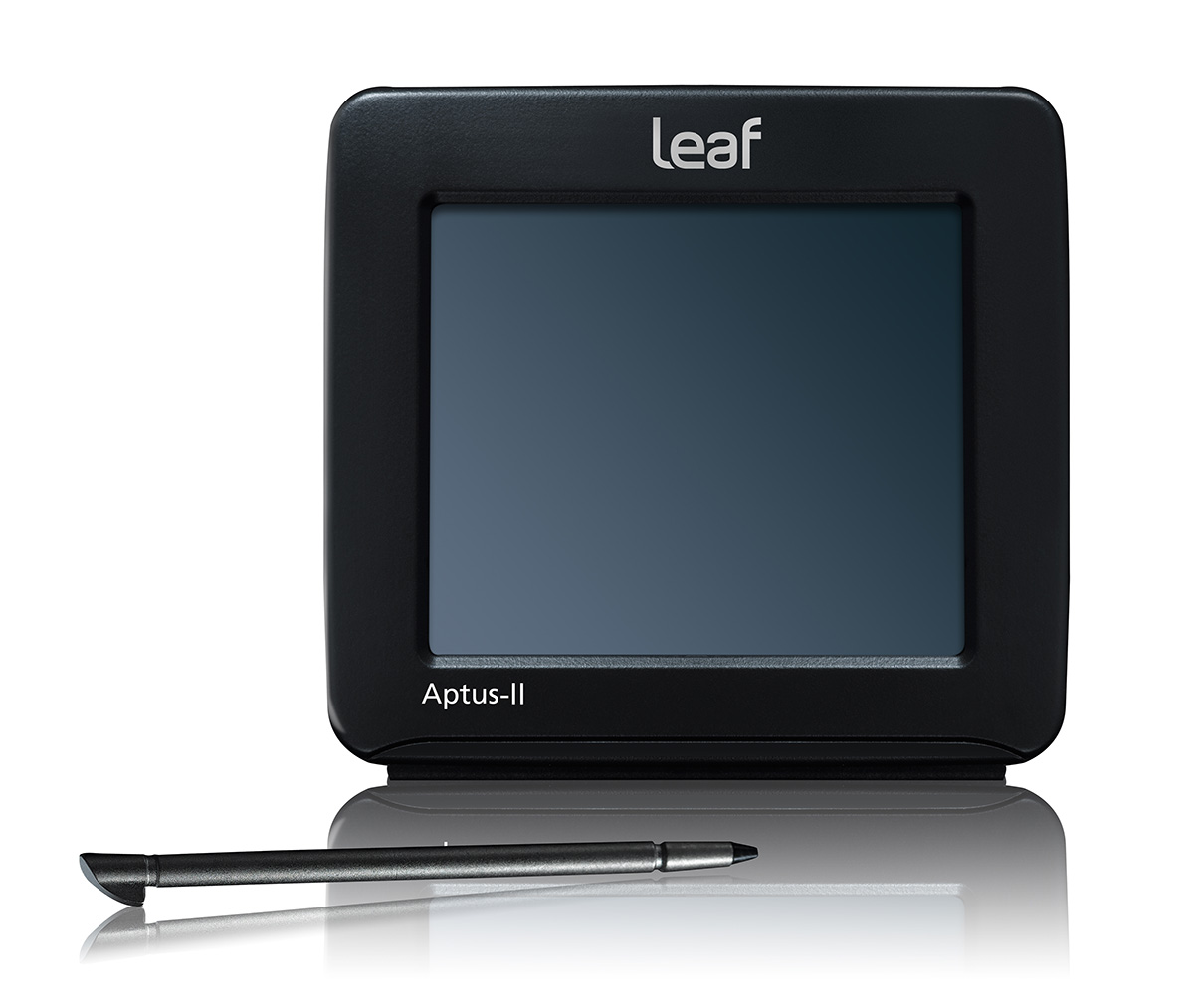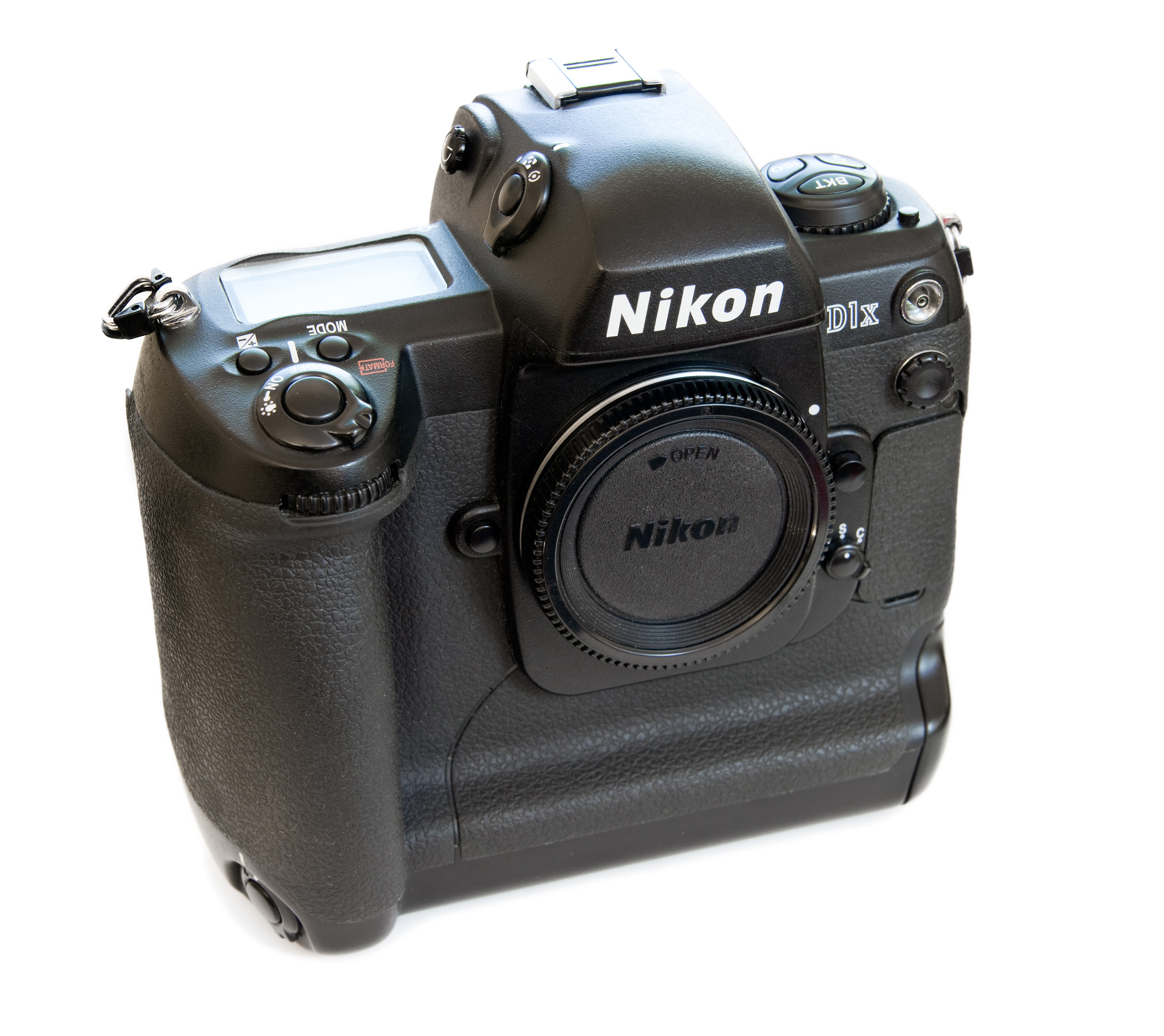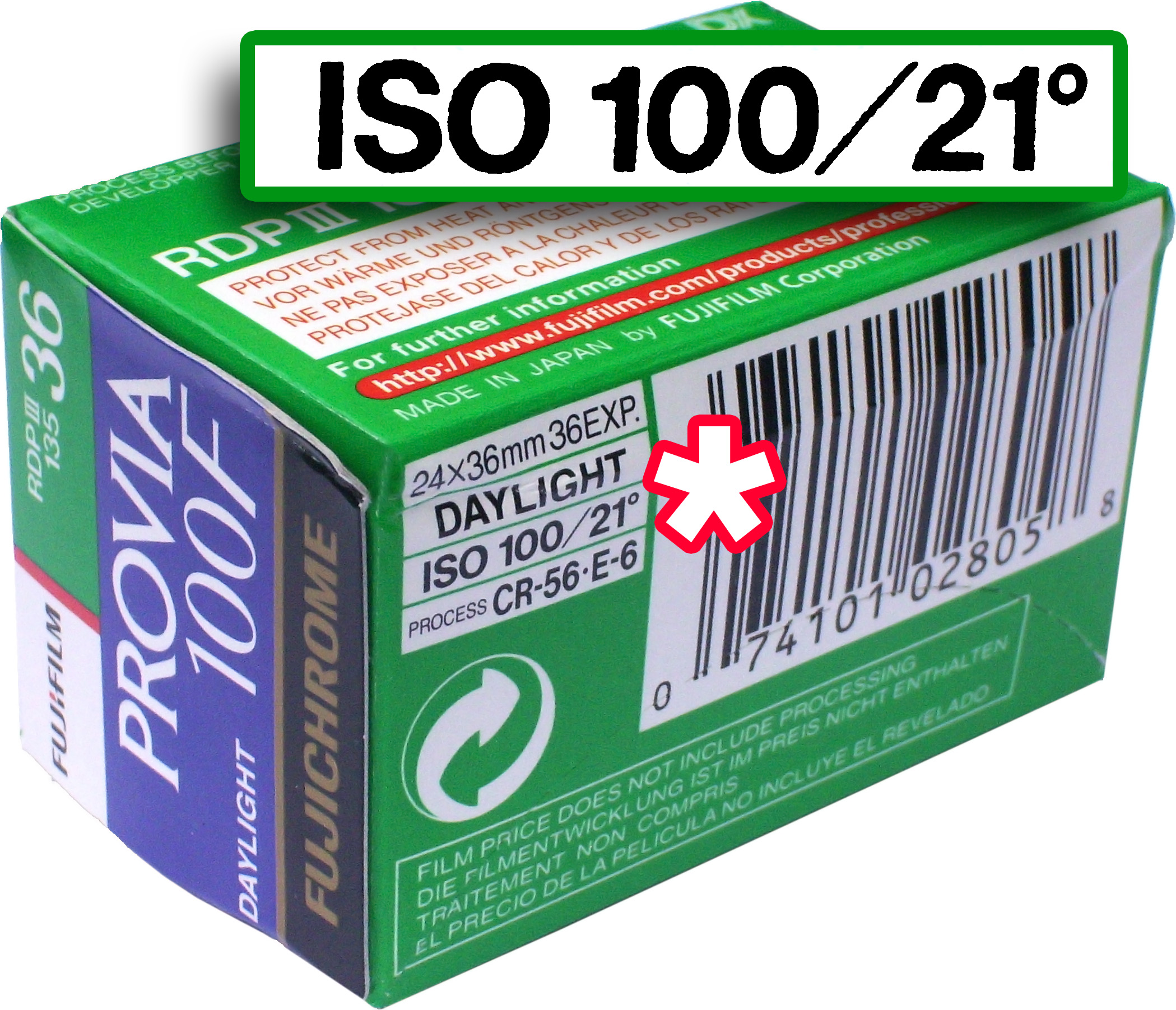|
Kodak DCS
The Kodak Digital Camera System is a series of digital single-lens reflex cameras and digital camera backs that were released by Kodak in the 1990s and 2000s, and discontinued in 2005. They are all based on existing 35mm film SLRs from Nikon, Canon and Sigma. The range includes the original Kodak DCS, the first commercially available digital SLR. History In 1975 Kodak engineer Steven Sasson invented the first digital still camera, which uses a Fairchild 100 x 100 pixel CCD. By 1986 Kodak had developed a sensor with 1.4 million pixels. A number of other inventions were made to increase usability, including improvements in sensor technology, the first raw image format DCR, and usable host software. The original Kodak DCS was launched in 1991, and is based on a stock Nikon F3 SLR with digital components. It uses a 1.3-megapixel Kodak KAF-1300 sensor, and a separate shoulder-mounted processing and storage unit. The DCS 200 series of 1992 condenses the storage unit into a module whic ... [...More Info...] [...Related Items...] OR: [Wikipedia] [Google] [Baidu] |
Kodak DCS 420 Digital Camera Back 01 (white Bg)
The Eastman Kodak Company (referred to simply as Kodak ) is an American public company that produces various products related to its historic basis in analogue photography. The company is headquartered in Rochester, New York, and is incorporated in New Jersey. Kodak provides packaging, functional printing, graphic communications, and professional services for businesses around the world. Its main business segments are Print Systems, Enterprise Inkjet Systems, Micro 3D Printing and Packaging, Software and Solutions, and Consumer and Film. It is best known for photographic film products. Kodak was founded by George Eastman and Henry A. Strong on May 23, 1892. During most of the 20th century, Kodak held a dominant position in photographic film. The company's ubiquity was such that its " Kodak moment" tagline entered the common lexicon to describe a personal event that deserved to be recorded for posterity. Kodak began to struggle financially in the late 1990s, as a result of th ... [...More Info...] [...Related Items...] OR: [Wikipedia] [Google] [Baidu] |
Nikon F Mount
The Nikon F-mount is a type of interchangeable lens mount developed by Nikon for its 35mm format single-lens reflex cameras. The F-mount was first introduced on the Nikon F camera in 1959, and features a three-lug bayonet mount with a 44mm throat and a flange to focal plane distance of 46.5mm. The company continues, with the 2020 D6 model, to use variations of the same lens mount specification for its film and digital SLR cameras. History The Nikon F-mount is one of only two SLR lens mounts (the other being the Pentax K-mount) which were not abandoned by their associated manufacturer upon the introduction of autofocus, but rather extended to meet new requirements related to metering, autofocus, and aperture control. The large variety of F-mount compatible lenses makes it the largest system of interchangeable flange-mount photographic lenses in history. Over 400 different Nikkor lenses are compatible with the system. The F-mount is also popular in scientific and industrial a ... [...More Info...] [...Related Items...] OR: [Wikipedia] [Google] [Baidu] |
Nikon
(, ; ), also known just as Nikon, is a Japanese multinational corporation headquartered in Tokyo, Japan, specializing in optics and imaging products. The companies held by Nikon form the Nikon Group. Nikon's products include cameras, camera lenses, binoculars, microscopes, ophthalmic lenses, measurement instruments, rifle scopes, spotting scopes, and the steppers used in the photolithography steps of semiconductor fabrication, of which it is the world's second largest manufacturer. The company is the eighth-largest chip equipment maker as reported in 2017. Also, it has diversified into new areas like 3D printing and regenerative medicine to compensate for the shrinking digital camera market. Among Nikon's many notable product lines are Nikkor imaging lenses (for F-mount cameras, large format photography, photographic enlargers, and other applications), the Nikon F-series of 35 mm film SLR cameras, the Nikon D-series of digital SLR cameras, the Nikon Z-series of digital mi ... [...More Info...] [...Related Items...] OR: [Wikipedia] [Google] [Baidu] |
Kodak DCS 760 1912
The Eastman Kodak Company (referred to simply as Kodak ) is an American public company that produces various products related to its historic basis in analogue photography. The company is headquartered in Rochester, New York, and is incorporated in New Jersey. Kodak provides packaging, functional printing, graphic communications, and professional services for businesses around the world. Its main business segments are Print Systems, Enterprise Inkjet Systems, Micro 3D Printing and Packaging, Software and Solutions, and Consumer and Film. It is best known for photographic film products. Kodak was founded by George Eastman and Henry A. Strong on May 23, 1892. During most of the 20th century, Kodak held a dominant position in photographic film. The company's ubiquity was such that its " Kodak moment" tagline entered the common lexicon to describe a personal event that deserved to be recorded for posterity. Kodak began to struggle financially in the late 1990s, as a result of th ... [...More Info...] [...Related Items...] OR: [Wikipedia] [Google] [Baidu] |
Leica M9
The Leica M9 is a full-frame digital rangefinder camera from Leica Camera AG. It was introduced in September 2009. It uses an 18.5-megapixel Kodak image sensor, and is compatible with almost all M mount lenses. Features The M9 uses an 18.5-megapixel Kodak (KAF-18500) CCD image sensor that was developed specifically for the camera. The M9 supports most M-mount lenses—with only a few older models not suitable due to protruding elements of the lens into the camera body. Reception The M9 was introduced by Leica on 9 September 2009, in New York City. The launch (which also introduced the Leica X1 and Leica S2 models) included a live video webcast, and featured a guest appearance by the musician Seal. In 2011, Leica verified a malfunction that may prevent the camera from saving images to certain SanDisk cards and issued a firmware update in July 2012, that made "further improvements of SD-Card compatibility". Leica M9 Titanium In 2010, Leica released the Leica M9 Titanium camer ... [...More Info...] [...Related Items...] OR: [Wikipedia] [Google] [Baidu] |
Leaf (Israeli Company)
Leaf is an Israeli company that manufactures high-end digital backs for medium format and large format cameras. It was previously a division of Scitex and later Kodak, and is now a subsidiary of Phase One. In 1991, Leaf introduced the first medium format digital camera back, the Leaf DCB1, nicknamed ‘The Brick’, which had a resolution of 4 million pixels (4 megapixels). As of 2012, Leaf produces the Credo line of digital camera backs, ranging from 40 to 80 megapixels. Until 2010, Leaf also produced photography workflow software Leaf Capture. Products Digital camera backs After Leaf's DCB, the digital backs evolved into two product lines, the Aptus and the (now discontinued) Valeo. The main difference is that the Aptus models have a 3.5-inch touchscreen, where the Valeos have no on-board display. The Valeos can still be used untethered by using the DP-67 software or the more recent WiView software on a Compaq iPAQ. The iPAQs are connected via Bluetooth with the digital back ... [...More Info...] [...Related Items...] OR: [Wikipedia] [Google] [Baidu] |
Digital Camera Back
A digital camera back is a device that attaches to the back of a camera in place of the traditional negative film holder and contains an electronic image sensor. This lets cameras that were designed to use film take digital photographs. These camera backs are generally expensive by consumer standards (US$5,000 and up) and are primarily built to be attached on medium- and large-format cameras used by professional photographers. Types Two sensor back types are commonly used: single shot back (non-scanning) and scan back. Some backs, primarily older ones, require multiple exposures to capture an image; generally one each for red, green, and blue. These are called multi-shot or 3-shot backs. As technology advanced single-shot backs became more practical; by 2008 most backs manufactured were single-shot. Early backs had to be used tethered by a cable to a controlling computer that would store the images they took. Newer models added the ability to store the photos inside the bac ... [...More Info...] [...Related Items...] OR: [Wikipedia] [Google] [Baidu] |
Full-frame Digital SLR
A full-frame DSLR is a digital single-lens reflex camera (DSLR) with a 35 mm image sensor format (). Historically, 35 mm was one of the standard film formats, alongside larger ones, such as medium format and large format. The full-frame DSLR is in contrast to full-frame mirrorless interchangeable-lens cameras, and DSLR and mirrorless cameras with smaller sensors (for instance, those with a size equivalent to APS-C-size film), much smaller than a full 35 mm frame. Many digital cameras, both compact and SLR models, use a smaller-than-35 mm frame as it is easier and cheaper to manufacture imaging sensors at a smaller size. Historically, the earliest digital SLR models, such as the Nikon NASA F4 or Kodak DCS 100, also used a smaller sensor. Kodak states that 35 mm film (note: in "Academy format", 21.0 mm × 15.2 mm) has the equivalent of 6K horizontal resolution, according to a senior vice president of IMAX. This equates to 10K horizontal resolution in full- ... [...More Info...] [...Related Items...] OR: [Wikipedia] [Google] [Baidu] |
Nikon D1
The Nikon D1 is a digital single-lens reflex camera (DSLR) made by Nikon Corporation introduced on June 15, 1999. It featured a 2.7-megapixel image sensor, 4.5-frames-per-second continuous shooting, and accepted the full range of Nikon F-mount lenses. The camera body strongly resembled the F5 and had the same general layout of controls, allowing users of Nikon film SLR cameras to quickly become proficient in using the camera. Autofocus speed on the D1 series bodies is extremely fast, even with "screw-driven" AF lenses. Although Nikon and other manufacturers had produced digital SLR cameras for several years prior, the D1 was the first professional digital SLR that displaced Kodak's then-undisputed reign over the professional market. Unusual for a DSLR, the D1 uses the NTSC color space instead of the conventional sRGB or Adobe RGB color spaces. The resulting color on the D1 can be a bit unorthodox, but methods of correcting and/or compensating for the color problem are readily a ... [...More Info...] [...Related Items...] OR: [Wikipedia] [Google] [Baidu] |
Film Speed
Film speed is the measure of a photographic film's sensitivity to light, determined by sensitometry and measured on various numerical scales, the most recent being the ISO system. A closely related ISO system is used to describe the relationship between exposure and output image lightness in digital cameras. Relatively insensitive film, with a correspondingly lower speed index, requires more exposure to light to produce the same image density as a more sensitive film, and is thus commonly termed a ''slow film''. Highly sensitive films are correspondingly termed ''fast films''. In both digital and film photography, the reduction of exposure corresponding to use of higher sensitivities generally leads to reduced image quality (via coarser film grain or higher image noise of other types). In short, the higher the sensitivity, the grainier the image will be. Ultimately sensitivity is limited by the quantum efficiency of the film or sensor. Film speed measurement systems His ... [...More Info...] [...Related Items...] OR: [Wikipedia] [Google] [Baidu] |
Bayer Filter
A Bayer filter mosaic is a color filter array (CFA) for arranging RGB color filters on a square grid of photosensors. Its particular arrangement of color filters is used in most single-chip digital image sensors used in digital cameras, camcorders, and scanners to create a color image. The filter pattern is half green, one quarter red and one quarter blue, hence is also called BGGR, RGBG, GRBG, or RGGB. It is named after its inventor, Bryce Bayer of Eastman Kodak. Bayer is also known for his recursively defined matrix used in ordered dithering. Alternatives to the Bayer filter include both various modifications of colors and arrangement and completely different technologies, such as color co-site sampling, the Foveon X3 sensor, the dichroic mirrors or a transparent diffractive-filter array. Explanation Bryce Bayer's patent (U.S. Patent No. 3,971,065) in 1976 called the green photosensors ''luminance-sensitive elements'' and the red and blue ones ''chrominance-sensitive ... [...More Info...] [...Related Items...] OR: [Wikipedia] [Google] [Baidu] |




.jpg)




